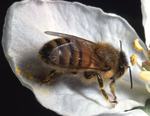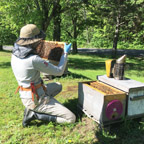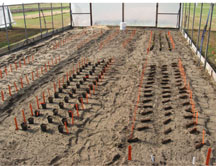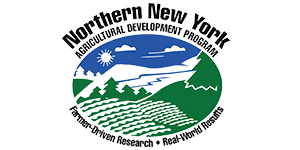 The farmer-driven Northern New York Agricultural Development Program has posted its 2018 grant announcement and application at www.nnyagdev.org.
The farmer-driven Northern New York Agricultural Development Program has posted its 2018 grant announcement and application at www.nnyagdev.org.
Proposals are sought for projects to address the agricultural challenges and opportunities unique to the six northernmost counties of New York State. A list of farmer-generated research ideas focused on field crops, dairy, horticulture, livestock, local foods, and maple production is posted with the grant application.
Funding for the Northern New York Agricultural Development Program is supported by the New York State Senate and administered by the New York State Department of Agriculture and Markets. The 2017-2018 State Budget provides $600,000 for NNYADP projects in 2018.
The farmer-driven Northern New York Agricultural Development Program provides research and technical assistance to farmers in Clinton, Essex, Franklin, Jefferson, Lewis and St. Lawrence counties. Past projects funded by the program have helped regional farmers enhance production efficiency, reduce costs, develop new product and marketing opportunities, and support the sustainability of farm businesses, local economies, and agricultural environmental stewardship. The results of past research projects are posted on this website.
Note: The application form was updated at 10 am on August 31, 2017; please use the links below to prepare for application.
RFP: Request for Proposals Grant Information
Application Form with Budget due by Oct 23, 2017
Research Ideas (doc) (PDF)

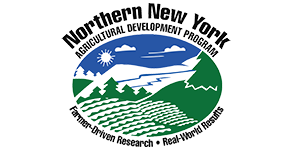 The farmer-driven Northern New York Agricultural Development Program provides research and technical assistance to farmers in Clinton, Essex, Franklin, Jefferson, Lewis and St. Lawrence counties. Funding for the Northern New York Agricultural Development Program is supported by the New York State Senate and administered by the New York State Department of Agriculture and Markets.
The farmer-driven Northern New York Agricultural Development Program provides research and technical assistance to farmers in Clinton, Essex, Franklin, Jefferson, Lewis and St. Lawrence counties. Funding for the Northern New York Agricultural Development Program is supported by the New York State Senate and administered by the New York State Department of Agriculture and Markets.
